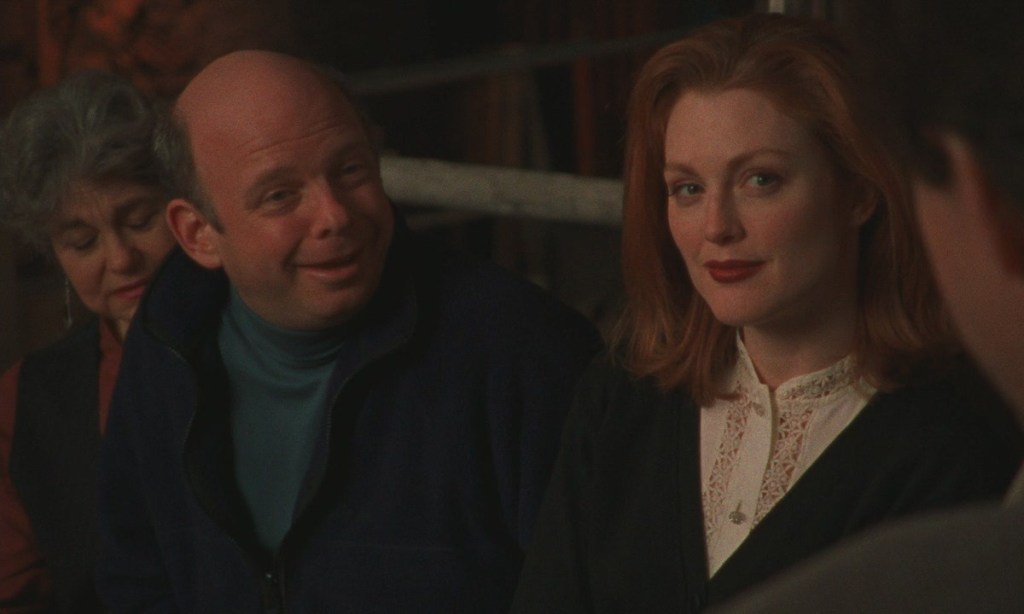
A young white woman sitting in a ticket booth for a porno theatre. The key image to Variety (1983) that I had in my head before watching it. New York city in its grimy, sleazy prime. “The old New York” is an idea that has been mythologised into nostalgia, often calcified (HBO’s The Deuce, for example). Going back to independent movies from this era function like documentaries – from The Driller Killer to Smithereens – and seeing NYC for what it is, the crummy looking apartments and working class in the meat packing districts, balancing out the punk scene and bohemian vibes. Bette Gordon’s film, Variety, exists at a cultural flashpoint with writer Kathy Acker contributing the screenplay, John Lurie making the score, and future indie film figures like Tom DiCillo and Christine Vachon involved in the production. Early roles for beloved character actors like Will Patton, Luis Guzman, and Mark Boone Junior. Even discovering in the closing credits that monologuist Spalding Gray was the voice of an obscene answering phone machine. A production budget combined from West German TV, Channel 4 UK and the New York State Council.
What struck me about Variety was that even if it is in the same milieu of something like Taxi Driver, it offers a counterpoint to the macho catholic mix of desire and repression when it comes to the sex industry. There’s something more ambivalent and ambiguous here. A transplant from the midwest, Christine (Sandy McLeod), hoping to be a writer but who needs money to get by. Her bartender friend Nan (photographer Nan Goldin) knows of a job, working the ticket booth in the porno theatre, Variety. There, Christine is accompanied by the upbeat theatre barker Jose (Guzman, so great), and finds herself killing time in the lobby on her breaks. While there is an aspect where Christine is affected by the adult movies and the furtive male customers walking in to watch, her desires are displaced into intrigue around a regular customer, Louie (Richard M. Davidson, almost has an Art Garfunkel vibe), a middle-aged man who dresses in a suit and speaks with a business-like reserve. As Christine’s reporter boyfriend Mark (Patton) talks mostly about his own investigative journalism, Christine begins to compulsively tell erotic stories, and in her off-hours, she secretly follows Louie on his business deals.
Despite the grimy atmosphere, there’s a playful quality to how director Bette Gordon uses montage, such as in a sequence cataloguing the porno theatre marquees, or editing together scenes of men shaking hands. There are creepy customers and the occasional seedy come-ons, but often the men stand silently and withdraw when Christine takes a smoke break in the theatre lobby, or wanders through an adult book shop. Variety connects to feminist debates around pornography and sexuality from the time, and on release was controversial in some circles, looking back at writing from Gordon around its release. McLeod is very good in the lead role, articulating a growing confidence as well as a loss of self, finding herself drawn into mysteries and role-playing. A neo-noir vibe permeates this slice-of-life character study of both an individual and a place, and the ambiguity around Christine’s descent into this world is liberating or totalising.
Available to stream on Kanopy. Recommended.



